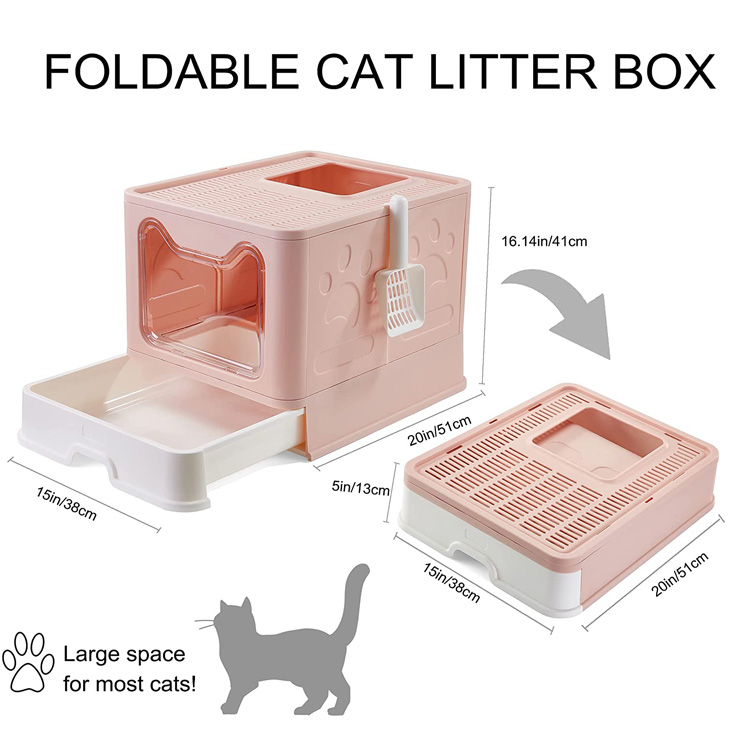Key points about cat litter trays
2023-11-29
A cat litter tray box, commonly known as a cat litter box or cat litter pan, is a container designed for indoor cats to use for urination and defecation. It provides a confined and designated space for cats to perform these activities while allowing for easy cleaning by their owners. Cat litter boxes come in various styles and designs, and selecting the right one depends on the preferences of the cat and the owner. Here are some key points about cat litter trays:
1. Types:
- Open Trays: These are basic, open containers that allow easy access for cats. They are simple to clean but may not contain odors as effectively.
- Covered or Hooded Boxes: These have a cover or hood, providing more privacy for the cat and helping to control odors. However, some cats may prefer open trays as they provide better ventilation.
2. Size:
- The size of the litter box should be appropriate for the size of the cat. It should be large enough for the cat to comfortably turn around and dig in the litter.
3. Material:
- Litter boxes are commonly made of plastic. Some are reinforced for durability, while others may have antimicrobial properties to prevent bacterial growth and odors.
4. Entrance Design:
- Some litter boxes have low entry points for easy access, which is especially useful for kittens, older cats, or cats with mobility issues.
- Others may have higher sides to prevent litter from being kicked out.
5. Litter Types:
- The type of cat litter used can impact the cat's acceptance of the litter box. Cats may have preferences for certain textures or scents of litter.
6. Easy Cleaning:
- Look for features that make cleaning the litter box convenient, such as a removable hood or a tray with smooth surfaces that are easy to wipe or wash.
7. Odor Control:
- Some litter boxes come with built-in filters or materials designed to control odors. Regular scooping and changing of the litter are also essential for odor control.
8. Placement:
- Choose a location for the litter box that provides privacy for the cat while still being easily accessible. Avoid placing it near the cat's food and water bowls.
9. Multiple Boxes:
- If you have multiple cats, it's recommended to have multiple litter boxes to prevent territorial disputes and ensure that each cat has access to a clean box.
10. Training:
- Most cats instinctively use a litter box, but kittens may need some training. Use a cat-friendly litter, and place the box in a quiet and easily accessible location.
Regular cleaning and maintenance of the litter box are crucial for a cat's health and well-being. Consider your cat's preferences and habits when selecting a litter box, and be attentive to any changes in behavior that may indicate a problem with the litter box or the cat's health.



